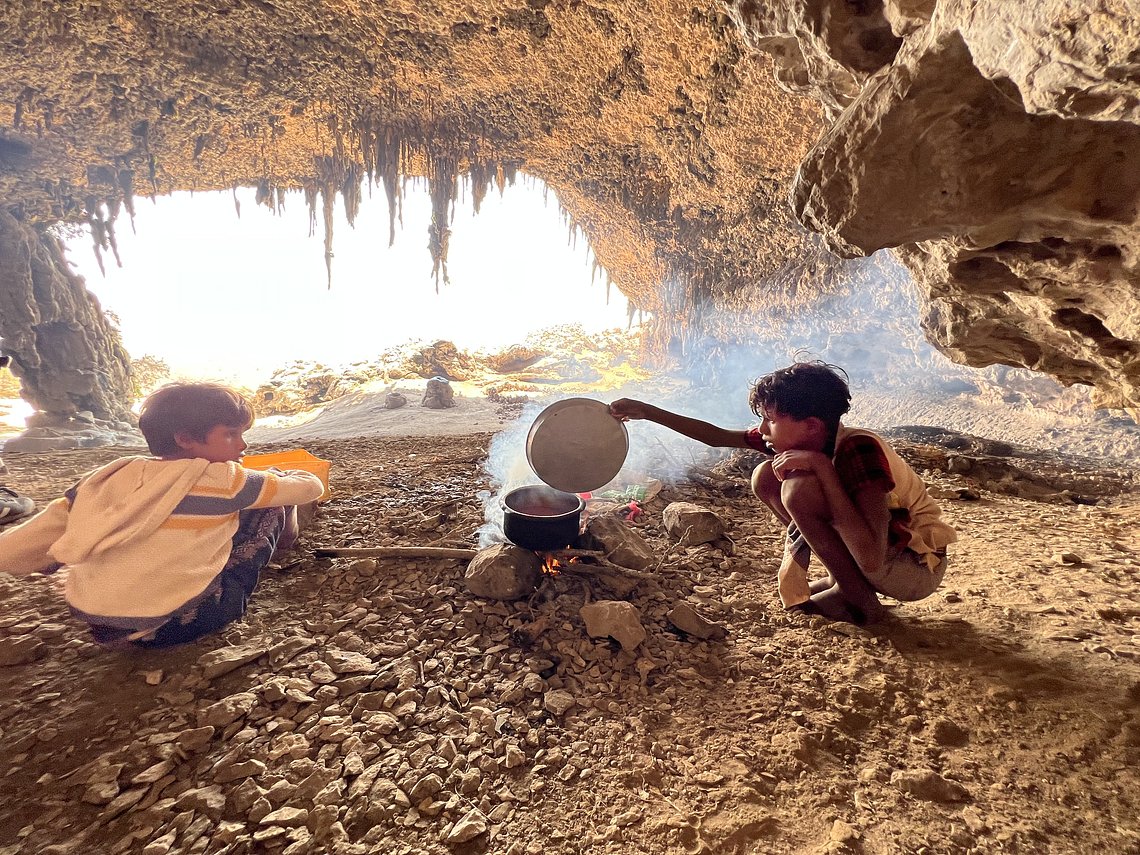Cultural Traditions and Cuisine of Socotra Island
Experience the Unique Flavors of Socotra Island - Rediscovering an Ancient Culinary Tradition

Posted on Fri 28 Apr 2023 · by Ray Gudrups
Introduction
Socotra Island is a small, remote island off the coast of Yemen in the Indian Ocean. With its dramatic landscape, Socotra is home to hundreds of endemic plant and animal species found nowhere else on Earth. The first people to inhabit Socotra were nomadic herders who lived in caves and rock shelters while they grazed their camels and goats along its coastal plains.
The island has been inhabited for at least 5,000 years and perhaps as long as 8,000 years ago. According to the 2004 census conducted by UNESCO (United Nations Educational Scientific and Cultural Organization), there are about 3700 residents living on this small island. Historically Socotra was known as a trading port that attracted merchants from across Arabia Felix (Southwest Arabia), Africa (particularly from Kenya), India, and even China! Socotri culture has been influenced by these peoples over time with each one leaving behind some aspects of their culture for others to enjoy today. Traditional cuisine is based upon fish & seafood; goat meat; yams; dates & figs etc...
Socotra Island is a small, remote island off the coast of Yemen in the Indian Ocean.
Socotra Island is a small, remote island off the coast of Yemen in the Indian Ocean. The island is about 95 miles long and 35 miles wide at its widest point, with an area of about 236 square miles (620 km2). Socotra has been inhabited since ancient times and has been ruled by various kingdoms and empires throughout history. The first known inhabitants were the Soqotri people who arrived there around 1500 BC; they were followed by other waves of settlers from Arabia and East Africa over time. Today it's part of Yemen but has its own government system separate from mainland Yemen due to its unique culture and traditions--which we'll cover later!
Socotra's culture was influenced by its long history as a trading port and by contact with African, Arab, and Indian cultures.
Socotra's culture was influenced by its long history as a trading port and by contact with African, Arab, and Indian cultures. Socotra has an ancient cultural heritage that has been passed down through generations. According to an old legend, Socotra was created when God placed two enormous rocks on top of each other to protect Adam and Eve from the serpent (Satan). This legend is still widely believed today even though it has no basis in fact; however, it shows how strong people's beliefs can be in this region.
Socotra also has many customs that are unique to the island such as their traditional dance called "al-badiya", which involves men wearing costumes made out of goat hair while dancing around fires at night during celebrations such as weddings or circumcisions ceremonies for boys turning into men!
Socotris have a strong belief in their ancient traditions and customs, which are still followed today.
Socotris are very religious and traditional. They follow their ancient customs and traditions, which they believe will protect them from evil. The islanders are hospitable people who welcome every visitor with open arms and invite them to experience their culture first-hand.
Socotris believe in the power of nature, which they call "the gods". They pray to these gods for protection against disease or bad luck, as well as for good health and prosperity on Earth. Many Socotris still practice witchcraft today; however, most of them do not believe in evil spirits anymore because nowadays there are hospitals where you can go if someone gets sick or injured instead of relying on traditional medicine only (which could sometimes be dangerous).
Traditional cuisine is based on fish and seafood, goat meat, yams, dates, and figs.
Fish and seafood are common.
Goat meat is also a staple of the diet.
Yam, dates, and figs are also eaten by Socotris as a traditional cuisine.
There are many cultural traditions that influence life on Socotra Island
There are many cultural traditions that influence life on Socotra Island. The traditional cuisine is based on fish and seafood, goat meat, yams, dates, and figs. Socotris have a strong belief in their ancient traditions and customs which are still followed today.
In addition to the above-mentioned food items, locals also consume wild plants such as tamarind leaves (Tamarindus indica), lemon grass (citronella), or Arak tree fruits for medical purposes like treating coughs due to cold weather conditions during winter months when temperatures drop below 10 degrees Celsius at night time or high humidity levels during summer months when temperatures may exceed 40 degrees Celsius during day time hours but drop down significantly at night time due to cooler winds blowing across the island from Yemen mainland coastline location towards a west direction where Socotra lies far away from any other landmass so no significant rainfall occurs here except occasional rainfall events brought by tropical cyclones coming from Indian Ocean region every year between May through November season only
Conclusion
Socotra Island is a fascinating place to visit, with its unique culture and traditions. It's easy to see why Socotris are so proud of their heritage and love sharing it with visitors from around the world. If you ever get the chance to visit Socotra Island then make sure you take some time out from exploring all there is to see go have some traditional food at one of their local restaurants or markets - it will leave a lasting impression on your visit!
